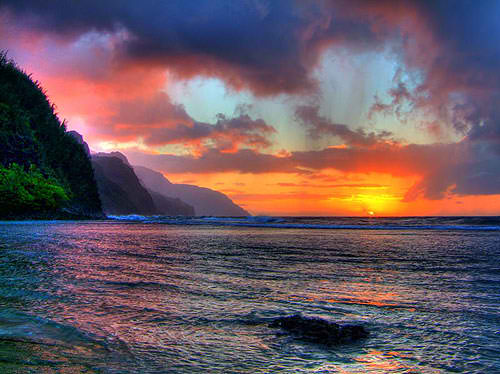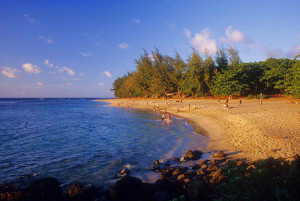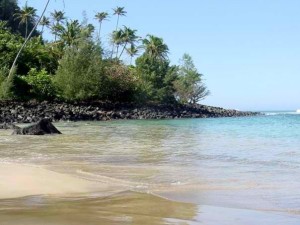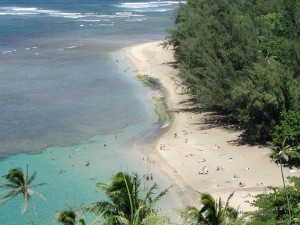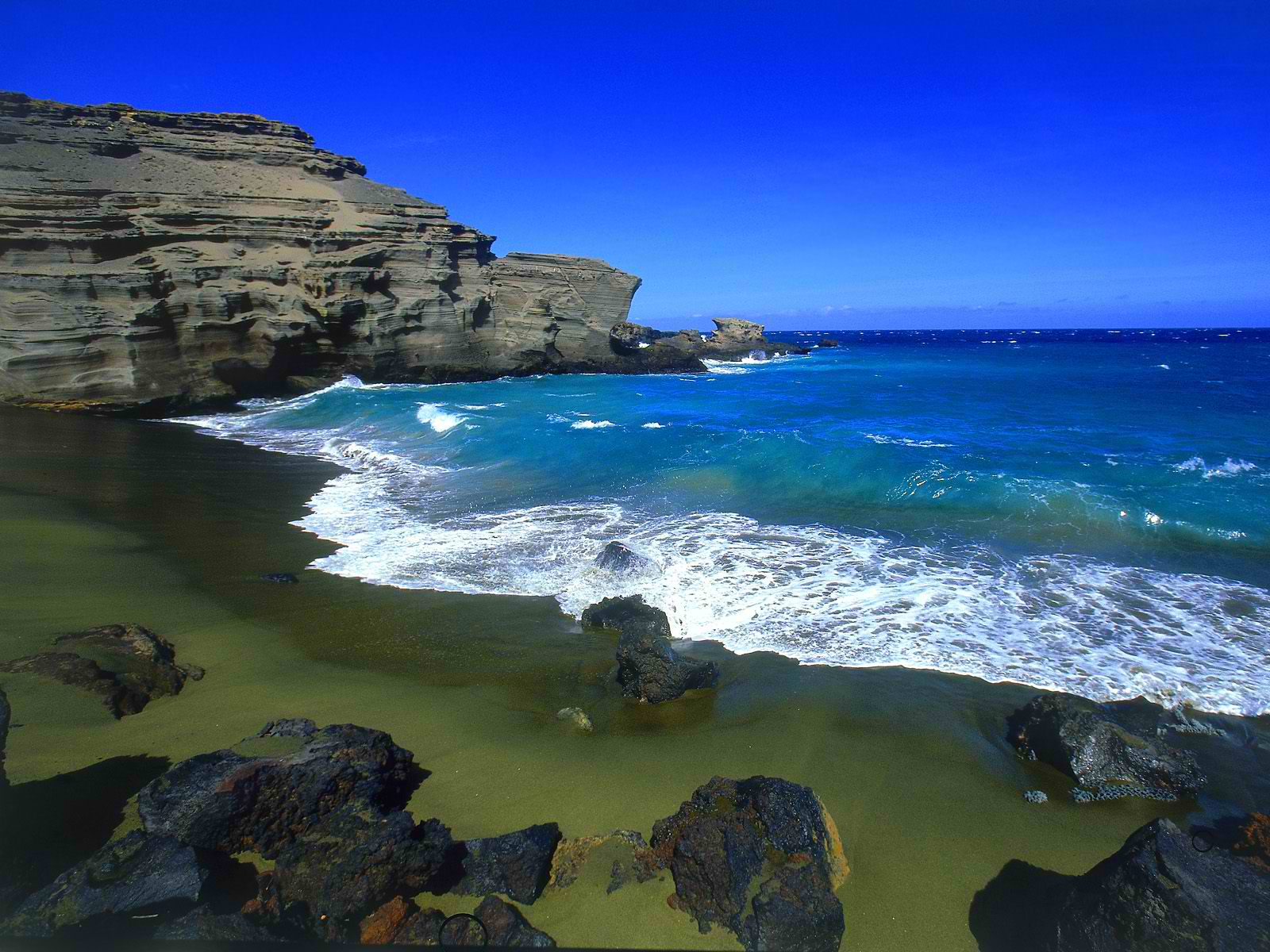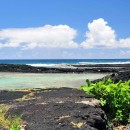Kee Beach (also spelled Ke`e Beach) is one of the most popular beaches in Kauai, Hawaii and perhaps the most frequented in the island's north shore. It is actually the last beach accessible by vehicles on the north shore. Both locals and tourists flock to the beach to experience its manificent views and clear waters so expect huge crowds especially during weekends.
Built like a lagoon, the beach is protected from waves by reefs which provide a good venue for swimming and snorkeling during summer season when the water is calm and the tide is not too high. The shallow waters is also ideal for swimming among families with young chicldren.
The water is very clear and aquatic life is abundant. Fishes that are present in the water include wrasses, butterflyfish, damselfish, goatfish, convictfish, and surgeonfish. If you are lucky, you can spot monk seals taking naps at the beach's coarse while sand. Interestingly, Kee Beach is also famous for the wild chickens (or infamous if you abhor the creatures) that made the area their home. They are practically harmless but avoid feeding some of them if you don't want the rest of the brood to come over to you to ask for food. So aside from the sounds of waves, expect ocassional clucking and crowing from the beach's resident fowls.
Located at end of Highway 560, the beach is also the start of the Kalalau Trail. Hikers usually stop by to relax at the beach after an adventure in the trails. The beach offers magnificent views of mountains of the Na Pali coast to the west. The sunsets here are awe-inspiring, definitely among the best in the world.
There are lots of ironwood trees and lush vegetation in the backshore providing shady areas perfect for picnics and relaxation. The public parking, however, is ridiculously limited so come in early to get a spot. There are bathrooms, showers and lifeguards.
Aside from the tropical splendor that is Kee beach, the area is also home to several important archaeological sites associated with the hula, including Kauluapaoa Heiau, a temple dedicated to Laka (goddess of the hula) which also served as a school for hula. These sites are still used by hula halau for graduation and other ceremonies.

